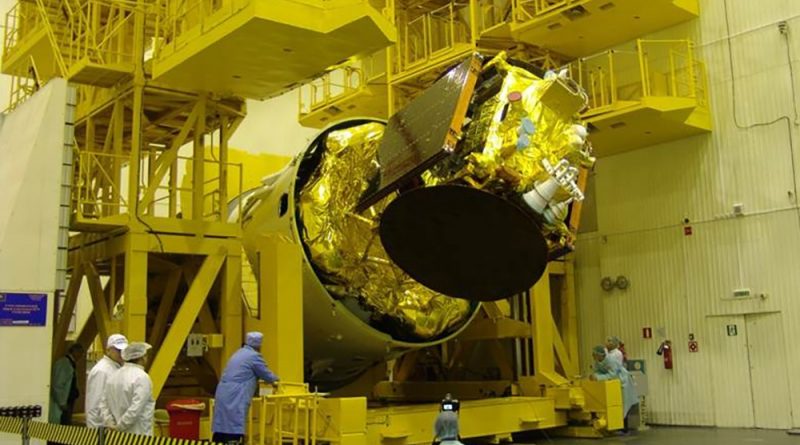Ground Control Loses Contact with Newly-Launched AngoSat 1 Satellite
Update (Dec. 28): Multiple Russian media outlets, citing sources within RSC Energia & the Angolan government, reported that contact with AngoSat 1 was restored on December 28 and telemetry was being received from the satellite. According to reports, AngoSat successfully deployed its power-generating solar arrays.
———-
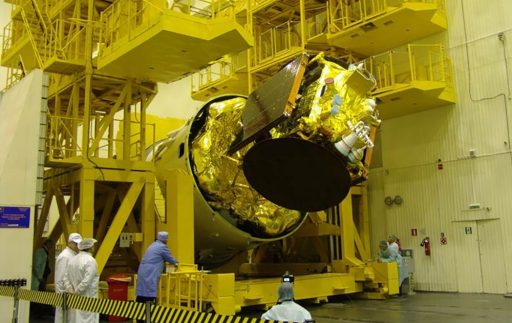
Successfully placed into orbit by a Zenit-3F rocket, Angola’s first communications satellite appears to have hit major trouble shortly after separation from its launch vehicle Wednesday morning following a nine-hour climb into a drift orbit over the equator.
According to Russian press reports later confirmed by satellite builder Energia, ground control lost contact with the AngoSat 1 spacecraft around the time of solar array deployment, just minutes after it separated from its upper stage.
Reaching the culmination of an eight-year road to the launch pad, the Russian-built AngoSat 1 lifted off from Site 45/1 at the Baikonur Cosmodrome at precisely 19:00:03.435 UTC on Tuesday, 1 a.m. local time. Battling strong winds and freezing temperatures, the 54-meter tall Zenit rocket climbed vertically before swinging onto a north-easterly departure path under the loud thunder of its RD-171M main engine, generating a whopping thrust of 770 metric-ton-force as the world’s most powerful liquid-fueled rocket engine.
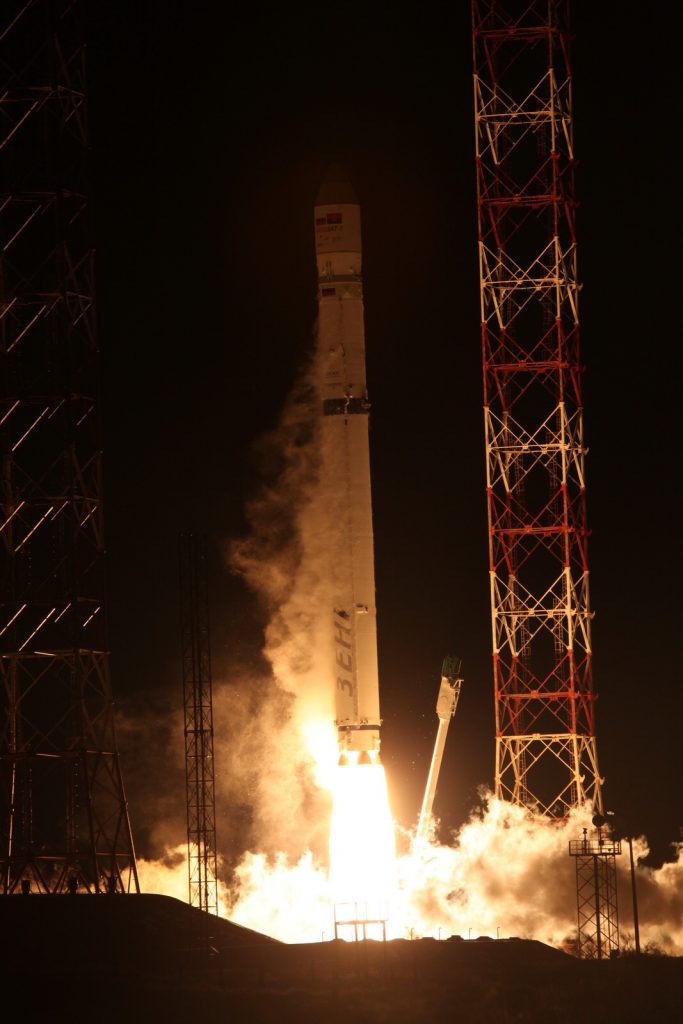
The rocket’s first stage fired for two minutes and 24 seconds before handing over to the second stage that continued pushing the stack toward orbit with a thrust of 93 metric ton force. Stage 2 shut down its main engine seven minutes and ten seconds into the flight and continued firing its four-chamber vernier engine for another minute and 25 seconds to accomplish the injection into a preliminary orbit of 166 by 547 Kilometers, inclined 51.4 degrees – a perfect match with pre-launch predictions.
From there, it was up to the Fregat-SB upper stage to perform a three-burn mission of eight hours and 46 minutes to methodically raise its orbit to deploy the 1,647-Kilogram satellite into a drift orbit near Geostationary Orbit. The first burn occurred 74 minutes into the flight and lifted the orbit’s high point to over 4,000 Kilometers, Fregat then dropped its Auxiliary Propellant Tank and coasted for an entire orbit to perform the next burn when passing perigee three hours and 24 minutes into the flight to further raise the apogee to match Geostationary Altitude.
The upper stage went back into passive flight mode for over five hours to climb all the way to the high point of the orbit, firing up its S5.92 main engine again at T+8 hours and 44 minutes after launch to circularize the orbit and reduce its inclination to as close to zero as possible. Roscosmos confirmed the successful separation of AngoSat 1 at 3:54 UTC on Wednesday.
AngoSat 1 established contact with ground stations after separation from the launch vehicle, but press reports emerged Wednesday morning that the spacecraft had suddenly stopped communications a short time after separation. According to Russian press outlets, telemetry from the satellite ceased around the time of solar array deployment and there has been no information on whether the arrays deployed – potentially leaving the satellite with a limited power supply.
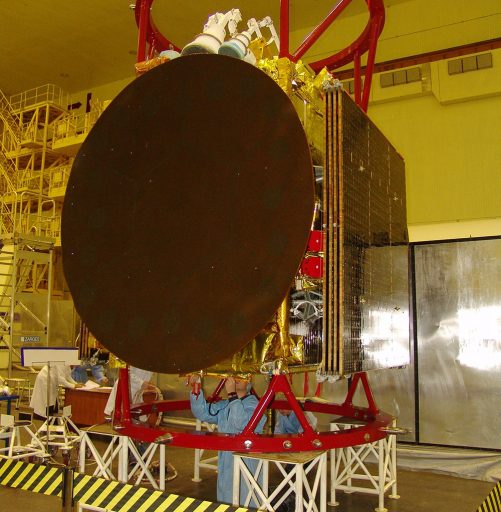
Satellite manufacturer RSC Energia acknowledged the anomaly in a press release issued later on Wednesday, noting AngoSat 1 was placed in the correct orbit by the Zenit-3F launch vehicle and established contact as planned before telemetry unexpectedly stopped. The company said its engineers were busy analyzing telemetry received from the satellite to pin-point the cause of the problem and attempts to restore communications were underway.
RSC Energia’s press release also noted three similar examples of sudden loss of communications: Kazakhstan’s KazSat satellite that lost communications this year, Russia’s Foton-M recoverable research spacecraft that failed to communicate with ground controllers for a full week in 2014, and NASA’s Stereo B solar observatory that ceased communicating in 2014 and was recovered briefly in 2016.
What could have caused the loss of telemetry at the point of solar array deployment is unknown at this time. Orbital tracking data, typically available within a few days for direct-to-GEO launches, could provide insight into whether any type of energetic event transpired on the satellite.
Since the satellite’s solar array deployment state is not known, predictions on how long its power will last are next to impossible. Even with its arrays in an undeployed state, the satellite may be able to generate sufficient power for its core platform systems, provided the outward-facing solar panels are properly illuminated.
>>AngoSat 1 Satellite Overview
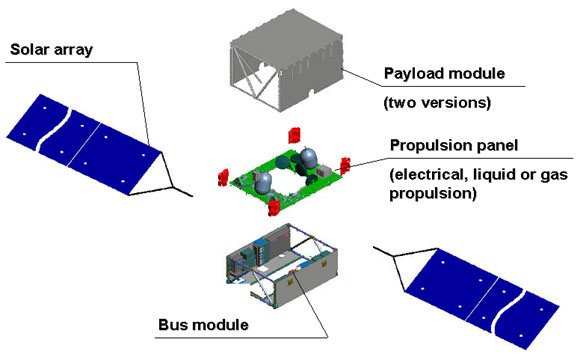
AngoSat-1 is based on Energia’s Universal Satellite Platform (USP) and hosts a hybrid communications payload built by Airbus Defence and Space, comprising 16 physical C-band and six Ku-band transponders to deliver TV broadcasting and telecommunications services to Angola as the African nation’s first owned geostationary satellite. Hosting an electric propulsion system, AngoSat was hoped to operate for 15 to 18 years from an orbital position at 14 degrees East to deliver coverage to the entire African continent.
USP flew on four Yamal commercial communications satellites in 1999 and 2003, has since undergone modernization, and is now used by the Tundra missile warning satellites and Geostationary Communications craft. Yamal-101, launching together with Yamal-102 on a Proton rocket in 1999, experienced a failure in its electrical system at the time of solar panel deployment – a very similar pattern of what was seen on AngoSat 1 if press reports hold true. Launched in 2003, Yamal-201 failed ten and a half years into its expected 12.5-year service life.
According to the Russian Tass news agency, AngoSat 1 has been insured for $121 million with two insurance agencies.

